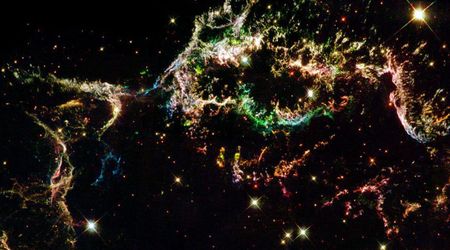Factories in orbit? The race to build the future of manufacturing in space has already begun

The concept of "the Cloud" may soon extend beyond Earth's atmosphere, with artificial intelligence (AI) data centers potentially being housed in space. This futuristic vision suggests that products bearing the label "Made in space" could become a reality sooner than anticipated. A recent report by The Royal Society calls this as an impending revolution, one that is expected to reshape industry, society, and culture with an impact comparable to the industrial and digital revolutions of past centuries, as reported by The Times.

This shift is driven by significantly decreasing costs associated with space access, making it feasible to unlock substantial benefits. The report, which examines the next five decades of the space economy, highlights the immense practical advantages that space offers to individuals, governments, and businesses. These advantages span from the creation of innovative products, such as new pharmaceuticals and bio-printed organs, to the utilization of abundant solar energy. Sir Martin Sweeting, a prominent figure in space engineering and a co-chair of the Royal Society report, emphasizes that the commercialization of space is rapidly gaining momentum.
“Space is really accelerating," Sweeting observed, noting that "if you look over just the last five years, the number of objects going into space has gone astronomical.” This surge is largely attributed to the decreasing costs of launching into space, a trend expected to continue with innovations such as SpaceX's reusable rockets. Sweeting emphasized the timely need for the UK to consider the implications: “Now is the time to think about the implications of this, also, from a UK point of view. How do we make the most of it?”

Both governments and commercial entities are actively exploring the benefits of orbital manufacturing. Certain molecules, valuable in pharmaceuticals, can only be synthesized in zero-gravity environments. For instance, last year, a US company, Varda Space Industries, successfully brought back a capsule from orbit containing antiviral drugs it had manufactured there. Crystal growth also behaves uniquely in space. Companies like "Redwire Space" are among those researching the potential for producing superior semiconductors in orbit. Experiments on the International Space Station have already demonstrated the ability to create fiber optic cables with fewer flaws. The Royal Society specifically highlighted bioprinting, the creation of intricate tissues and organs from cells, as a promising novel manufacturing industry that could benefit from this unique environment, as mentioned by the outlet.
The report elaborated, “Some items, such as artificial human organs, are much more challenging to 3D-print on Earth, as they require each molecule or cell to be positioned precisely to avoid the structure collapsing. Synthetic blood vessels currently collapse on themselves.” Sweeting further suggested that many of the significant opportunities would arise from identifying what could be more affordably produced away from the Earth's surface, with a primary example being the energy supply for AI data centers. He concluded that, as the country seeks new avenues for growth, part of the answer may be above our heads. He further articulated the report's aim: “The purpose of our report is to draw attention to the UK government — space should be taken more seriously. The implications are so great, it should be central to their thinking.”









